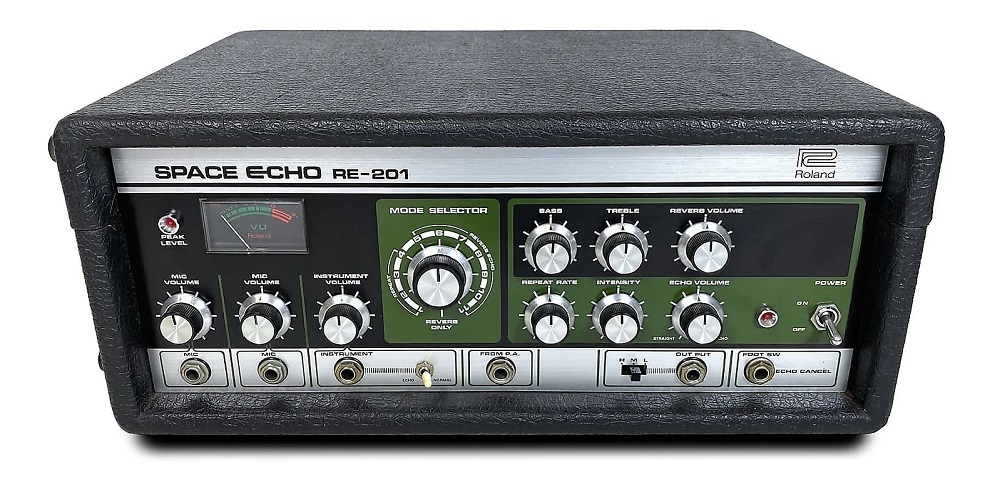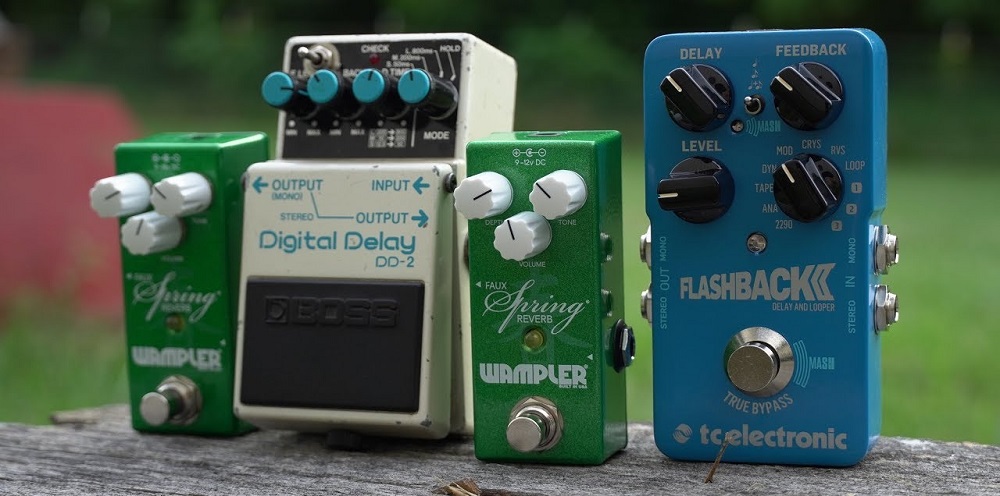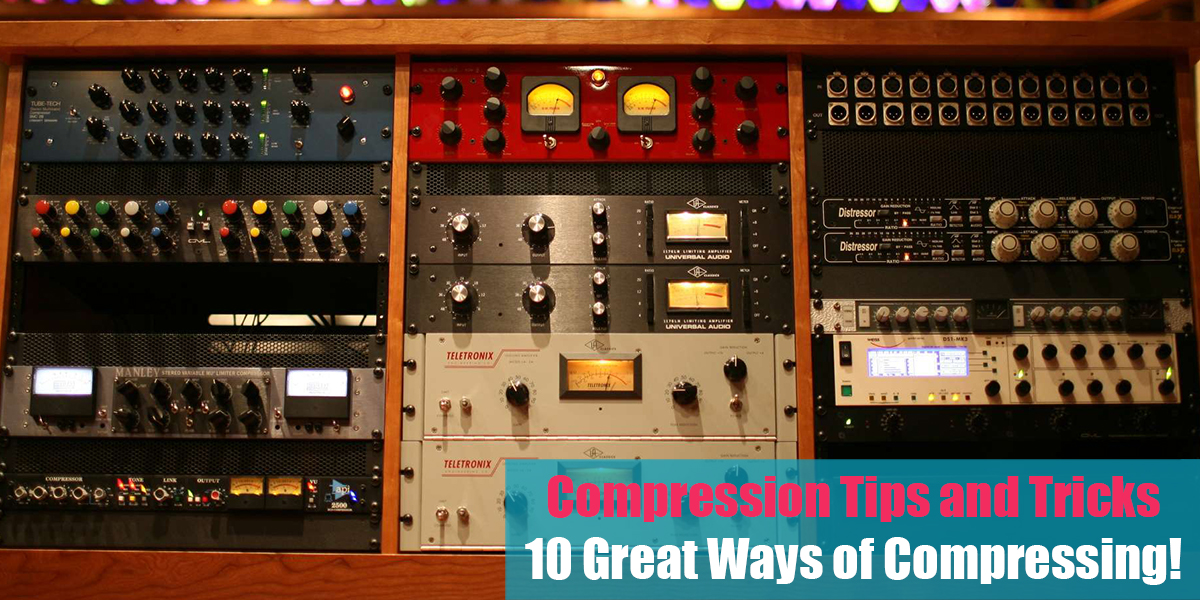Using Delay Instead of Reverb
Introduction
When mixing, reverb and delay are the first things that come to mind for anyone, regardless of their level of experience. In the majority of music genres, these two effects are used to provide a new dimension to songs.
Reverb and delay are mainly responsible for making it possible for some popular DAWs to mix in 3D. Let us briefly discuss both reverb and delay before we proceed with the reverb vs delay discussion.
Our discussion will focus on the points at which they are similar and different. It is our objective to provide you with information that will help you choose between these two effects, and how to make the most of them when using both simultaneously.
Delay
A delay is simply the repetition of an original audio signal over and over after a brief period of time. It is similar to reverb in that delays are used to play back sound waves or audio waves. When we shout something on an elevated ground, such as a mountaintop, it occurs naturally. Echoes are types of delays that cause our voices to be duplicated.
There are various types of delays, ranging from subtle echoes (to emphasize certain frequencies) to complete manipulations, producing more drone-like sounds (like in Shoegaze music). As with reverbs, delays can be digital or analog.
The most common types are ‘echo’, ‘tape’, ‘ping-pong’, ‘slapback’, etc. Contrary to analog reverb pedals, analog delays such as Electro Harmonix’s Canyon and MXR’s Carbon Copy have great popularity.
In addition, digital delays, such as the Boss DD-7 and the TC Electronic Flashback pedal, are also available. You should consider your musical genre and the type of sound you wish to create when choosing an analog or digital delay pedal.

Reverb
Alternatively, reverb is the result of early reflections and diffusion of the original sound source in three dimensions. A fraction of a second later than the original sound, reflected sounds are perceived by the listener as part of the original sound.
The sound of singing in your bathroom is a good example. If your voice is reflected off surfaces like tile, sheetrock, or glass, you will likely not hear any discrete echo; however, there will be a sense of depth or dimension provided by these reflective surfaces.
If you sing in a room that is carpeted and curtained, you will hear dry sounds with few early reflections, if any. In essence, reverb is the decay of a soundwave into silence as it reacts with a physical space.
As a result of a sound or signal reflecting off a surface, the amplitude (volume) of the sound or signal decreases until it is no longer audible. Our ability to manipulate the type of reverb we want has been greatly enhanced by technology.

Using Reverb and Delay Together
What if you combined the two? Is that possible? It is possible to combine these two effects, and it becomes even more exciting when you mix them together. Combined with purpose, reverb and delay work well together, and we cannot emphasize enough the importance of purpose.
The key to successfully using both audio effects in a mix is the order in which they are applied. You will get more distinct reverberations if you place delay before reverb, while if you reverse this, you will get a muddy delay.
What you are looking for will determine what you find. It does not end there. Use delay first, followed by reverb if you wish to replicate classic sounds, such as those produced in the 60s and 70s.
This can be accomplished either through the software you are using or by purchasing a stompbox. There may still be some space around the vocal if you wish to use it. You can dial in exactly the amount of delay and reverb by mixing them on different auxiliary sends.
Why Use Delay Over Reverb?
The main and most obvious application of delays is when playing guitar – especially when it is a lead playing single notes or melodies (instead of rhythmic parts). It is also possible to use delays on rhythm guitars, but the results are more pronounced on leads.
A short, fast delay can enhance the energy and space surrounding a lead vocal, just as it does with lead guitars. As a result of the loss of intelligibility that occurs when reverbs are applied to fast vocals, they can be difficult to use. If you use lower reverb tails, things can become very muddy very quickly, but delays do not suffer the same fate.
An effective way to anchor a lead vocal to the rest of the mix is to incorporate a vocal delay subtly under it. When mixed at a lower level, these delays serve more as a texture for the voice, adding complexity and character.
Swapping out some of those reverbs for delays solves the problem of the washed-out sound without altering the depth and space you were trying to achieve with the reverbs in the first place.

The Difference Between Delay and Reverb
If you are not familiar with the difference between reverb and delay, you may be ruining your mix without even knowing it. Perhaps you have added some reverb to your song and it has become muddy, but you do not know how to fix it. It is important to understand the difference between the two.
What are the differences between these two, and what are the similarities? The difference between a delay and a reverb can be summed up in one word. It is technically correct to refer to reverb as a delay effect. An effect that simulates sound waves bouncing around a room is a time-based repeating effect.
The reverberation effect is usually more complex and includes a wide variety of controls and buttons to shape and control the sound. Time is also an important factor in the delay. There is, however, a time limit and a number of repetitions for which the process begins.
While both delay and reverb are time-based sound effects, delay repeats the signal after a brief interval, whose repetitions are dependent upon the feedback setting, while reverb gives your sound an atmospheric feel, which is what we perceive as the acoustics of the room.
Different Types of Delay
Slapback delay
The original output is followed by a quick and punchy echo. The delay time of the effect is between 40 and 120 milliseconds, and its effect feeds back to reinforce the note that is being reinforced. Electric guitars are ideally suited to this type of delay.
Doubling delay
A one-shot echo appears immediately after the original signal, but with a shorter delay (30 to 50 milliseconds). The main purpose of this device is to double the signal strength.
Tape delay
Nowadays, you can find delay plugins that are identical to analog tape delays. It follows the same principle: one tape plays the output, while the second tape records and stores the playback.
Looping delay
In this case, the delay loop never ends and does not decay over time. In the absence of adjustment, this delay may continue to loop indefinitely.
Modulated delay types ( Chorus/ Phaser / Flangers )
Despite generating a typical delay effect, Chorus alters the reflection’s frequency before returning it to the source. A flanger performs the same function but with a shorter delay time. Another type of effect called a Phaser uses an all-pass filter to create a swooshy sound that is applied directly on top of the original sound.
Inteligent Use of Delay over Reverb
If you need to add depth to your mix without necessarily creating a new space, a delay is a useful tool. The use of delays is a very simple method of enhancing and thickening vocals, guitars, and keyboards.
The sound will be thicker when you use settings that have a delay of fewer than 100 milliseconds and fewer than two repetitions. It is possible to create an impression of space using longer delays without cluttering up the mix, as with long reverb trails.
As we mentioned earlier, reverbs – particularly longer ones – can add a great deal to a mix or arrangement. If you use too much of it, it can also result in noise and clutter. There is a temptation to manage delays more easily – because they are simpler – however, you must also pay careful attention to how long the delay and feedback last.
In the presence of a short delay and too much feedback, metallic noise will result. The same applies to too much feedback with a long delay; it will continue for an extended period of time after the phrase has finished, repeating at the wrong time.
Conclusion
In summary, reverb and delay fall under the category of ambient effects. In addition to a wide selection of different algorithms and effect modes, there is an extensive list of parameters that can be tweaked. There is a difference between reverb and delay.
Reverb is produced by a back-and-forth echo chamber effect, while the delay is created by recording and repeating a block of time. It is our recommendation that both are suitable for most electric guitar players, especially those who utilize more electronic/ethereal soundscapes as opposed to blues.
We hope this article has provided you with an overview of how delay differs from reverb. Through practice and repetition, it is possible to learn how and when to use each of these effects. As a result, I hope that we have provided you with some general guidelines on when and how to use these tools, if only for the purpose of speeding up your learning process and avoiding some headaches in the process.







